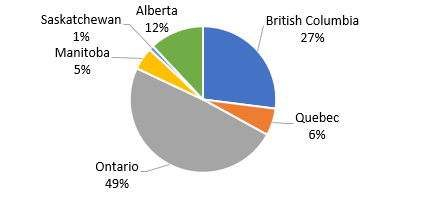Languages of trucking go beyond English and French
A mix of languages are being used by trucking and logistics employees in the workplace, and based on what we heard from industry employers this mix will continue to diversify.
Trucking HR Canada consulted the most recent Census data to determine what languages are being used in the industry, and through employer surveys and interviews we further explored if this mix of languages is being considered by companies as they work to foster effective communication in their workplace.
The following is what we found:
Languages used
According to a custom cross-tabulation of labor force data from the Census, in almost all trucking and logistics workplaces you will hear one of Canada’s official languages, as over 98% of truck drivers and fleet managers say that they use either English or French at work. This isn’t the whole story, though.
Roughly one quarter of Canadian truck drivers and fleet managers have a non-official language as their mother tongue, as defined by Statistics Canada. Of these most (78% of the truck drivers and 74% of fleet managers) report using a non-official language regularly at work, as defined by Statistics Canada, in addition to one or both official languages.
With a current driver workforce of approximately 291,700, based on current Statistics Canada labor force data, this means we have more than 56,800 employees using a language other than English or French in our workplaces.
Punjabi is, by far, the most common non-official language used in trucking and logistics’ workplaces, accounting for 60% of non-official languages used at work by drivers and 33% for fleet managers.
After Punjabi, the most common non-official languages used are German, Spanish, Polish, Russian, Mandarin and Cantonese.
Provincial distribution
Ontario is home to almost half of Canada’s drivers and fleet managers who use non-official languages at work. British Columbia has the second highest, followed by Alberta.

Almost 80% of Punjabi speaking drivers are based in Ontario and British Columbia. These provinces are also home to the largest proportions of Mandarin- (64% and 30%) and Cantonese- (62% and 33%) speaking truck drivers. Alberta and Manitoba are home to most of the truck drivers who use German at 55% and 24% respectively.
Language diversity in practice
The majority of language diversity challenges experienced by employers was with their drivers — with more than 40% of survey respondents “agreeing” or “somewhat agreeing” that the language diversity of truck drivers is a real challenge.
Employers indicated that ineffective communication impedes productivity. Examples include tasks taking longer to complete, workers taking longer to explain instructions or relay information, and safety or compliance measures being compromised.
This is an important consideration. With our driver vacancy rate at a record high, increasing productivity of our current workforce is a business imperative.
The industry’s response
Employers are working to build effective lines of communication, and two thirds of survey respondents “agree” or “somewhat agree” that their approach to language diversity is effective.
The most common approach amongst our survey respondents to ensure effective communication within a company’s workforce was to hire managers or supervisors who can speak other languages. Others included:
- hiring staff in other key positions (ie., dispatcher) who can speak other languages
- providing language training in French and/ or English
- posting notices in languages other than French and/ or English
- encouraging staff to use google translate
- developing study packets for drivers that display’s information using visuals and that articulates information in a clear and concise way
Effective communication is the foundation of strong workplace cultures that supports safety, driver retention, productivity, and more. Ensuring your employees can effectively communicate with each other, customers, and others is one approach that can help ensure you continue to succeed on all fronts.
Have your say
This is a moderated forum. Comments will no longer be published unless they are accompanied by a first and last name and a verifiable email address. (Today's Trucking will not publish or share the email address.) Profane language and content deemed to be libelous, racist, or threatening in nature will not be published under any circumstances.
Great to use other languages, but what are you going to do when your client or emergency services for example don’t speak/understand the language? How are you going to exchange basic or even potent life threatening information?
English is the universal language of aviation, so it should be in the trucking industry.
-
At least in Canada and the U S
Not knowing good English for cross border drivers is like not knowing French if driving in Quebec. It makes it more difficult and more dangerous. We need to provide and pay for English training of all foreign workers that come to ont that request it.